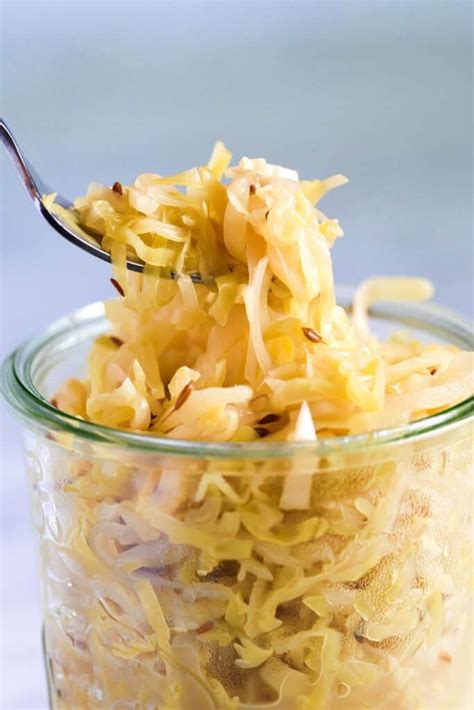Easy Sauerkraut Recipe: A Fermented Food for Beginners
Making sauerkraut might sound intimidating, but it's surprisingly simple! This easy sauerkraut recipe requires minimal ingredients and equipment, making it perfect for beginners venturing into the world of fermented foods. Let's dive into this delicious and healthy recipe.
Why Make Sauerkraut?
Sauerkraut, a traditional fermented cabbage dish, offers numerous health benefits. It's packed with probiotics, beneficial bacteria that support gut health and boost your immune system. It's also a good source of vitamin C and fiber. Plus, the fermentation process enhances the cabbage's flavor, creating a tangy and satisfying crunch.
Ingredients You'll Need:
- 2 lbs (900g) green cabbage: Choose firm, crisp heads for the best results.
- 2 tablespoons sea salt: Avoid using iodized salt, as it can hinder fermentation. Sea salt is preferred for its natural mineral content.
- **Optional: **1-2 teaspoons caraway seeds (for added flavor)
Step-by-Step Instructions:
1. Prepare the Cabbage:
- Remove the core: Cut the cabbage in half lengthwise, then remove the tough core from each half. You can use a sharp knife to cut it out.
- Shred the cabbage: Use a sharp knife or a food processor to shred the cabbage finely. Aim for consistent shredding to ensure even fermentation.
2. Salt the Cabbage:
- Combine cabbage and salt: In a large bowl, thoroughly mix the shredded cabbage with the sea salt and caraway seeds (if using). Use your hands to massage the salt into the cabbage, This helps to draw out moisture.
3. Pack the Sauerkraut:
- Choose your container: A glass jar (preferably with a wide mouth) or a food-grade ceramic container works best. Make sure the container is clean and sterilized.
- Pack tightly: Pack the salted cabbage firmly into the container, pressing down to release more moisture. You want it tightly packed to eliminate air pockets.
- Submerge the cabbage: The cabbage should be completely submerged in its own brine. If there isn't enough brine to cover the cabbage, you might need to add a bit of extra salt water (dissolve a teaspoon of salt in a cup of water). Make sure that the cabbage stays submerged, using a weight if necessary. A clean plate or a small jar filled with water can serve as a weight.
4. Ferment the Sauerkraut:
- Cover the jar: Cover the jar with a lid or cheesecloth secured with a rubber band. This allows gases to escape.
- Ferment at room temperature: Place the jar in a cool, dark place (around 65-72°F or 18-22°C) for 2-4 weeks. The fermentation process will produce gas; you'll notice bubbling.
- Monitor for mold: Check your sauerkraut every day or two. If you notice any mold, discard it immediately.
- Taste Test: Start tasting your sauerkraut after 2 weeks to determine your preferred level of tanginess.
5. Store the Sauerkraut:
- Refrigerate: Once the sauerkraut has reached your desired level of tanginess, refrigerate it to slow down the fermentation process. It will keep in the refrigerator for several months.
Tips and Variations:
- Experiment with spices: Add other spices like juniper berries, peppercorns, or red pepper flakes for different flavor profiles.
- Use other vegetables: Include shredded carrots or other firm vegetables along with the cabbage.
This easy sauerkraut recipe is a great starting point for your fermented food journey. Enjoy the process and the delicious, healthy results! Remember to always prioritize food safety when handling fermented foods.
